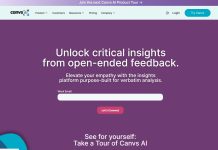
A career as a data scientist is considered one of the most attractive paths a young professional could take in the present day. And why would it not be so? With a median base annual salary of USD 108,000 and a job satisfaction score of 4.2/5 according to Glassdoor, it is easy to understand why people are turning to this career choice.
Why are organizations looking to hire big data scientists? Simply because there is so much data flowing in, given how digitalization is happening. All this data is a valuable resource that when properly mined, could unveil some very valuable insights to guide operational strategies of companies.
However, before knowing about the career paths in data science, it is useful to understand how the data science pipeline works. Every data science project is a process, and the following are the common, broad steps:
- Formulating the project objectives: A company might seek to know more about a current business issue or to identify attractive opportunities in the marketplace. It is important to be clear about what one hopes to accomplish in order for the company to gain a competitive edge.
- Planning the sourcing of data: The next phase would be figuring out where to get the required data from. This also involves planning the resources required and putting together a team to get the job done.
- Preparing the data: Carefully cleaning and exploring the data could help the emergence of associations and the refinement of the sample and variables. This will be followed by modeling as well as the validation and refinement of models by senior data scientists.
- Visualizing and presenting the findings: This is essential to bring the results forward in a form that others can understand. The data must be in a suitably compelling form and structure.
Given this knowledge, the following are the roles and career paths available for those looking at a data science career:
-
Data analyst
The work profile here comprises largely day-to-day tasks such as gathering data, structuring databases, creating and running models, analyzing trends, making recommendations, and presenting the results visually to tell a story. The difference from the role of a big data scientist is that while the data scientist looks at the big picture, the data analyst has more focused, specific goals assigned by the data scientist, and thereby requires a narrower skill set.
The key responsibilities of this role imply that business and strategy skills are not really required, as much as technical skills are. It is important to be conversant with advanced statistics, market research, MS Excel, and SQL, as well as a programming language like Python or R and a visualization tool such as Tableau.
-
Business intelligence (BI) analyst
A BI analyst is expected to look at the big picture after accurately understanding the market position of the business unit in question and comprehending the relevant trends. The key task is to provide actionable information. Typical expertise areas include business, economics, and management, though they definitely need a stronghold on how to speak the language of data, given that they will work with large data quantities from multiple sources.
The BI analyst is expected to know how to mine, model, and analyze data, understanding patterns and chunks to improve the competitive positioning of the company. The person should be familiar with basic statistics, market research, MS Excel, and a visualization tool like Tableau. SQL and Python or R would be valuable additions.
-
Marketing analyst
Closely related to a data analyst, this role does not involve much work in programming and machine learning. The focus instead is on using specialized software to analyze consumer behavior. Thus, this role requires specialized knowledge of campaign management, marketing research, and strategy and planning. Along with this, mastery of Google AdWords and Analytics and the basics of statistics (to design and monitor metrics) are needed. MS Excel is a given, and Tableau further strengthens the credentials.
Given the variety and attractiveness of specific roles for aspirants to senior data scientist roles, they would do well to take some more actionable steps after determining the role they like and getting skilled accordingly. Networking with professionals and influencers on social media is a great tool, along with showcasing a portfolio of projects on GitHub. Online courses can add further skills to the arsenal, which makes the candidate attractive to the target employer.











